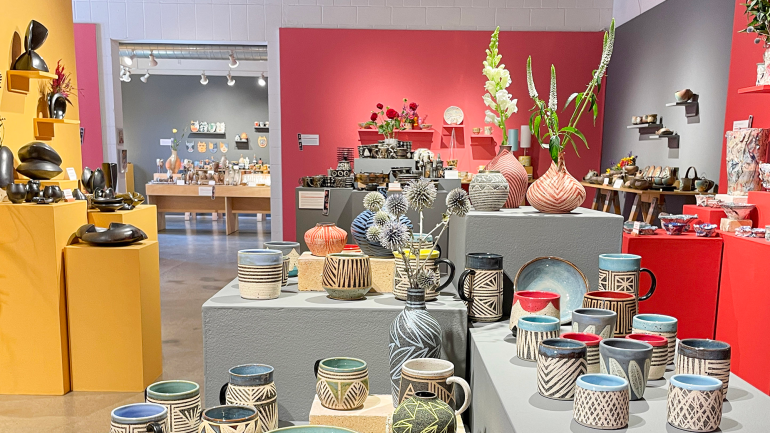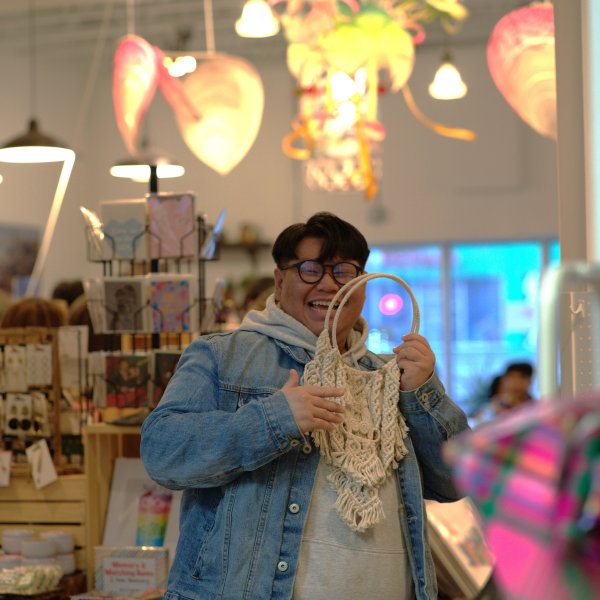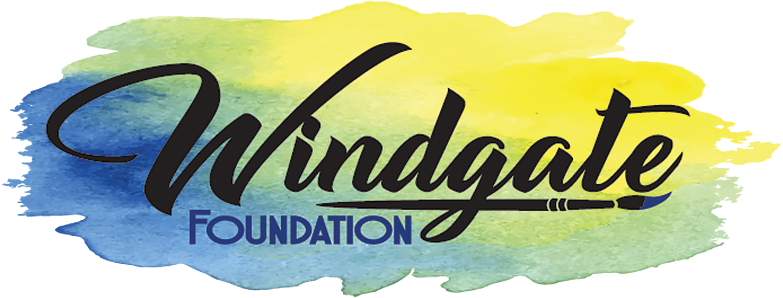The Scene: Twin Cities Places and Spaces
The Scene: Twin Cities Places and Spaces
Where to Buy Supplies
“Continental Clay of Minneapolis has a great deal to do with my success as an artist and craftsperson,” says Dom Venzant. “Local, knowledgeable, and supportive, this family-run and organized business has provided clay, equipment, materials, supplies, and support for the vast majority of my creative pursuits over the last 20 years.” Fred Kaemmer likes Continental Clay, too, and checks there “for shaping tools or really nice turntables.”
Offering hardware, a range of metals and alloys sorted by type or shape, and various cutting and welding services, Coremark Metals in Minneapolis “has anything you need in metal,” says Kaemmer.
Dyani White Hawk recommends Fire Mountain Fabrics and Supply in Brooklyn Park, a suburb of Minneapolis, which stocks a huge selection of fabric and also ribbon skirt kits.

Northland Visions, a Native-owned gallery and retail shop, has been around in one form or another since 1995. “I often shop at Northland Visions in Northeast Minneapolis for thread, sinew, needles, and other beading supplies,” says Dyani White Hawk. Photo by Mike Mosedale.
“Moving to the Twin Cities has allowed me better access to materials that are oftentimes used in traditional Hmong craft,” says Ger Xiong. “I buy a lot of my materials—embroidery floss, metals, coins, and so forth—at Hmongtown Marketplace and Hmong Village,” both in Saint Paul. “They have a really great amount of fluorescent embroidery thread that I often use in my work, fabrics that are directly related to Hmong textiles, everyday objects, ceremonial objects, toys, garments, hats, winter clothes, medicine, shampoo, and a lot more! I definitely recommend checking these spaces out. And while you're there, grab some food and drinks.”
When Marvin Freitas is looking for wood for a project, he checks Industrial Lumber and Plywood in Minneapolis, Metro Hardwoods in Maple Grove, “and local loggers for larger slabs. There are so many and the prices are all over, so I just shop around to meet clients’ budgets.”
“I often shop at Northland Visions in Northeast Minneapolis for thread, sinew, needles, and other beading supplies,” says White Hawk. “But for the extensive bead purchasing my studio practice requires, I rely on bead vendors all over the States and do a ton of sourcing online.” She also shops at Blick for paint and art supplies and at JoAnn for sewing supplies.
“Most of my glass supplies come from online sources, which is not unusual for glassblowing,” says Kaemmer. “I do, however, use several local merchants for studio supplies.” Smith-Sharpe Fire Brick Supply in Minneapolis “deals with all things refractory and they know their stuff.”
Artists’ Spaces and Events
Short-lived last winter due to warm weather and melting ice, the Art Shanty Projects is a village of ingenious vernacular ice houses built on Lake Harriet in Minneapolis by musicians and artists working in various disciplines.
Minneapolis’s Barebones Puppet Theater is known for its Annual Halloween Outdoor Puppet Extravaganza, a spectacle that includes giant puppets and aerialists.
Can Can Wonderland in Saint Paul, which features an 18-hole miniature golf course designed and created by local artists and an arts retail shop, promises “the most experiential art experience you’ve ever had, all while sinking putts.”
Hmong Cultural Center on University Avenue in Saint Paul “has a good collection of Hmong craft-based work and shows a good amount of Hmong culture and history,” says Ger Xiong.
In Saint Paul, Indigenous Roots provides accessible space “to promote and practice holistic well being through indigenous arts, culture, and tradition” and is working with artists, cultural groups, neighbors, and others to develop the 7th Street Cultural Corridor.
Established in 1977, the Minnesota Lace Society was formed to educate the public on “all aspects of lace.” They do this through programs, classes, demonstrations, and other events.
Northeast Minneapolis is considered the city’s arts district, and no wonder. It’s home to the Northeast Minneapolis Arts Association’s annual Art-A-Whirl open studio tour, a gazillion studio spaces, and the American Craft Council, which is located in the renovated Grain Belt brewery near the Mississippi River. Another high point is the Flux Arts Building on the corner of Lowry Avenue and Howard Street, which houses Clay Squared to Infinity and Potek Glass. Fans can also visit artists across Northeast through First Thursdays in the District.
Spread across dozens of galleries, shared spaces, and artist lofts, Saint Paul Art Crawl—organized since 1991 by the Saint Paul Art Collective—takes place every spring and fall.
Schools, Workshops, and Resources
Founded in New York in 1943 and based in Minneapolis since 2010, the nonprofit American Craft Council offers a range of support to craft artists in all parts of the country, including professional mentoring, a virtual marketplace, in-person events, online forums, and the quarterly magazine American Craft. Says Dom Venzant, “I have found that the American Craft Council, Springboard for the Arts, and the Metropolitan Regional Arts Council are three tremendous organizations that support and provide opportunities for creative projects at both the group and individual level.”
“They do cool stuff!” says Marvin Freitas of the Chicago Avenue Fire Arts Center in Minneapolis. Offering studio space and classes in blacksmithing, enamel work, encaustic painting, glasswork, metal casting, jewelry and small sculpture making, and metal fabrication, this organization is in fact pretty cool.
St. Paul–based American Association of Woodturners hosts a gallery of wood art in its Landmark Center headquarters, publishes American Woodturner magazine, promotes a bounty of resources for lathe lovers on its website, and puts on an annual symposium promoting the art form, which will be held at the RiverCentre in June 2025.
Founded in 1981, CLUES, or Comunidades Latinas Unidas en Servicio, works toward social and economic equality and well-being for Latinos in Minnesota. Their efforts include arts programming, such as vibrant Día de los Muertos events featuring traditional craft and a Saint Paul gallery that spotlights the work of Latino/a/x artists.
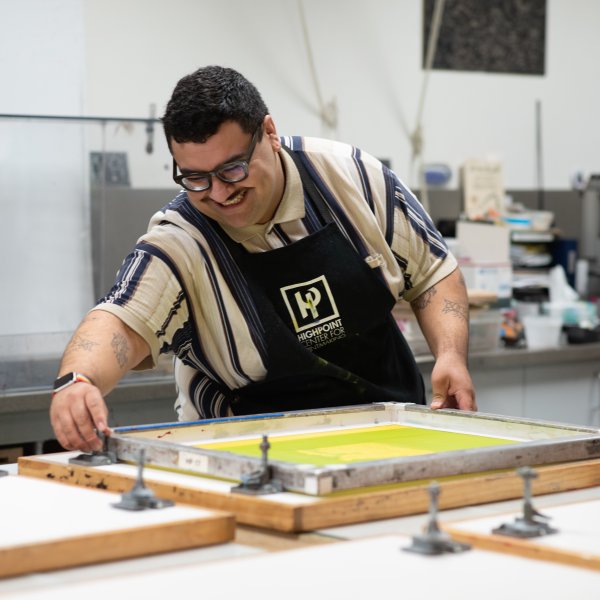
Instructor Edson Rosas prepares screens for a workshop at Highpoint Center for Printmaking in Minneapolis. Photo by Jenny Burwell, courtesy of Highpoint Center for Printmaking.
Offering classes in everything from furniture making to bowl turning, Fireweed Community Woodshop in Minneapolis aims to “empower women and nonbinary makers through the art of woodcraft.”
“I don’t really hang out in the art world too much, which is probably a character flaw I should work on,” says Fred Kaemmer. “But as for art hubs in the Twin Cities, I’m thankful that Foci Minnesota Center for Glass Arts is now well established. It gives people the opportunity to gain an appreciation for all facets of the glassmaking process through hands-on learning, demonstrations, and exhibitions.” Amara Hark-Weber concurs, adding that Foci is part of an “unusual concentration of craft centers here.”
Forecast, a national public art organization based in Saint Paul, offers Making It Public workshops for artists interested in taking their work into the public realm.
Hark-Weber points to Highpoint Center for Printmaking in Minneapolis, which offers cooperative studio space, exhibitions, equipment, and classes. “That is really special about the Twin Cities,” she says.
The Saint Paul–based Metropolitan Regional Arts Council, with funding from the Minnesota State Arts Board, awards grants and support to a wide range of artists and gets the thumbs up from Venzant.
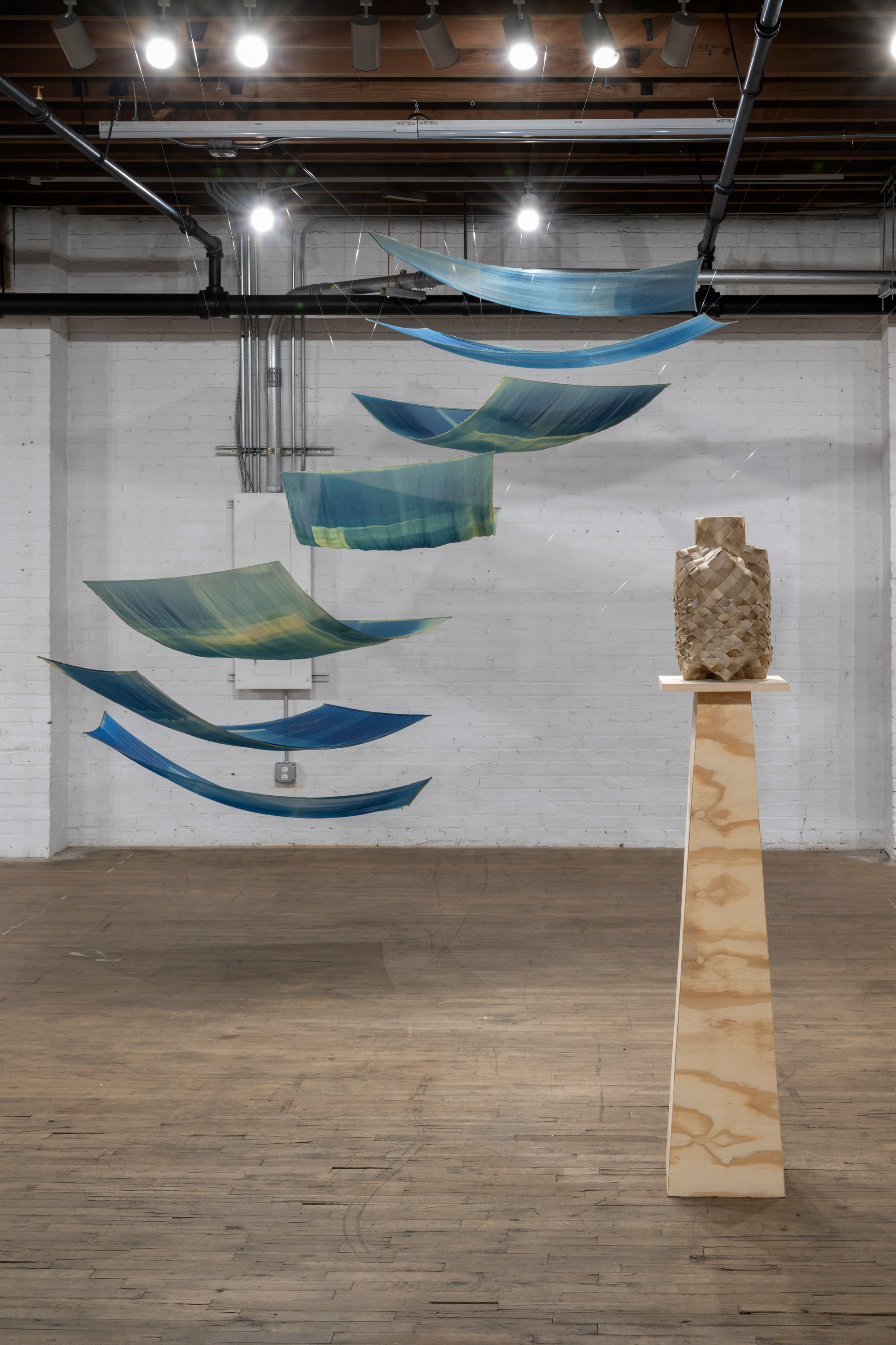
Hark-Weber recommends Minnesota Center for Book Arts in Minneapolis. Founded in 1983, this nonprofit visual arts center “celebrates the art of the book” by offering exhibitions and classes in letterpress printing, bookbinding, hand papermaking, paper marbling, and more.
With a dedicated, tax-based funding stream passed by voters in 2008, the Minnesota State Arts Board is a major supporter of the arts and, through a series of granting programs, spreads dollars to many craft organizations in the Twin Cities, including the American Craft Council.
Launched by Ini Iyamba, vice president of product design and development at Faribault Mill, MN4MN promotes and fosters “Minnesota’s diverse and burgeoning community of emerging artists, designers, and businesses.”
Mudluk pottery studio is a “Black/queer/woman owned ceramics sanctuary” in Minneapolis that provides classes in wheel throwing, hand-building, sculpture, and glaze application to students at all levels.
Hark-Weber recommends Northern Clay Center in Minneapolis, which offers exhibitions, classes, studio space, artist talks, and grants.
Founded in 1991, Springboard for the Arts aims to “support artists with the tools to make a living and a life, and to build just and equitable communities full of meaning, joy, and connection.” Venzant also recommends this organization, which has offices in Saint Paul and Fergus Falls, Minnesota, and provides grants as well as career consultations.
Run by ceramic artists Mitch Iburg and Zoё Powell, Studio Alluvium in Saint Paul offers workshops on working with local clay, making various types of vessels, and more.
Through classes, exhibitions, and events, the goal of the Textile Center in Minneapolis is to “honor textile traditions, promote excellence and innovation, nurture appreciation, and inspire widespread participation in fiber art.” Hark-Weber gives this organization the thumbs up.
Galleries, Studios, Markets
“I have shopped at Woodland Crafts Gift Shop located in the Minneapolis American Indian Center and Northland Visions in Northeast Minneapolis for many years,” says White Hawk. “They are both wonderful hubs for Native-made jewelry, art, crafts, home goods, foods, and beyond.”
“I recommend the XIA Gallery on University Avenue in Saint Paul,” says Xiong. “It has a great variety of Asian American and other BIPOC artworks and a rotating gallery space. They do a lot of great community-based work such as hand-based workshops.”
With its studios, galleries, and performance spaces, Public Functionary in Minneapolis supports the expression of arts and culture and empowers young artists, especially those who identify as BIPOC, queer, trans, or gender fluid.
Rogue Buddha Gallery in Minneapolis celebrates “hauntingly beautiful . . . works of art with an emphasis on magical realism, pop-surrealism, and the wondrously dark.”
Founded in 2001 by artist Suzy Greenberg, Soo Visual Arts Center in Minneapolis is a nonprofit art space that features artist talks, exhibitions, and workshops, and focuses on provocative art and that of underrepresented artists.
Museums
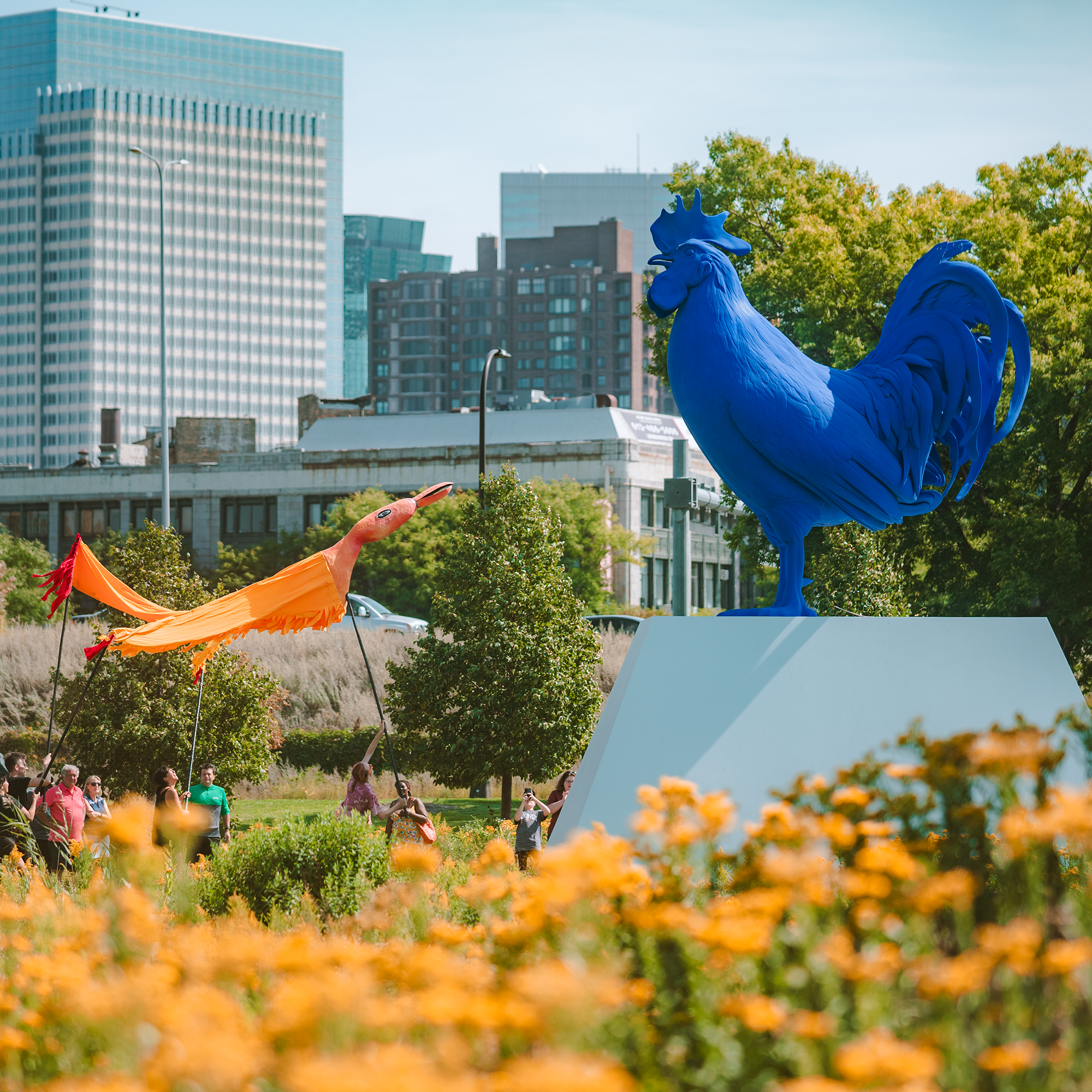
Billed as a “Nordic-inspired cultural hub,” American Swedish Institute in Minneapolis offers art exhibitions, educational programs, and more inside a 33-room mansion built in 1908.
Bell Museum’s spacious and stylish digs in Saint Paul house exhibitions, restored wildlife dioramas (some painted by Francis Lee Jaques), and the Whitney and Elizabeth MacMillan Planetarium.
Established by the family of businessman and philanthropist Gerard Cafesjian to share his art collection with the public, Cafesjian Art Trust in Shoreview features an extensive sculptural glass collection.
“Hmong Museum just opened up their physical location at Hmong Village” in Saint Paul, says Xiong. “So I recommend checking out their new space, as they will have rotating exhibitions throughout the year.”
Known simply as Mia, Minneapolis Institute of Art aims to “inspire wonder through the power of art.” It is home to more than 90,000 works representing 5,000 years of world history.
The Minnesota History Center in Saint Paul offers exhibits, a library with access to the state’s historical documents, a museum store, and a cafe. The center serves as the headquarters of the Minnesota Historical Society—which supports a Native American Artist-in-Residence program—and houses its collections and archives.
Founded in 1894, Minnesota Museum of American Art in Saint Paul is one of the oldest visual arts organizations in Minnesota. Its aim is to “showcase the unique voice of American artists with a new focus on living Minnesotan artists.”
Open in their current location since 2005, The Museum of Russian Art in Minneapolis holds a collection of thousands of sculptures, paintings, porcelain figurines, woodwork, folk art, and cultural artifacts, and promotes the understanding of Russian people, art, and culture.
Walker Art Center in Minneapolis is a multidisciplinary contemporary art center that hosts exhibitions and events, with an adjacent 11-acre sculpture garden containing Claes Oldenburg’s and Coosje van Bruggen’s well-known sculptural fountain, Spoonbridge and Cherry.
Situated on the University of Minnesota’s Minneapolis campus, the 90-year-old Weisman Art Museum offers exhibitions “that place art within relevant cultural, social, and historical contexts.” WAM also presents “organized letters, symposia, tours, and special events focused upon educational themes.”
